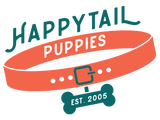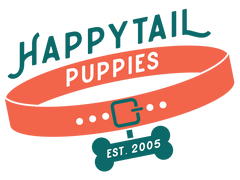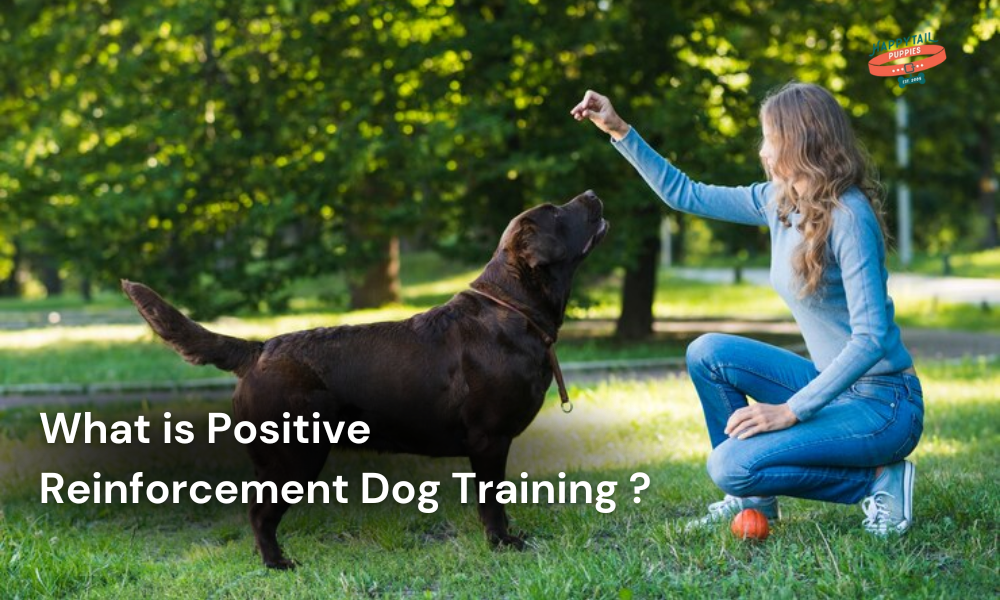What Is Positive Reinforcement Dog Training and Why Is It Effective?
Dog training showcases appropriate behavior, which is the key to ensuring a well-balanced relationship between pets and their owners. Among the different methods available, positive reinforcement training for dogs has attained huge fame for its effective and humane approach. Effective training tactics focus on rewarding desirable actions instead of punishing unwanted ones, making it most effective among pet enthusiasts and professional trainers. Positive reinforcement training helps teach dogs the right type of behavior, as it can help foster trust while strengthening the connection between you and your furry companion.
Positive reinforcement training is often established on the principles with the behaviors followed through the rewards. The procedure normally consists of constant practice, patience, and knowing about the requirements of your dogs, leading to outstanding results beneficial to both the dog and its owner.
Understanding Positive Reinforcement
Positive reinforcement consists of promptly rewarding a dog while it performs the much-desired behavior. The rewards often range from treats and praises to toys or playtime. The main thing involved here is the consistency that ensures that the dog is associating with the rewards to the distinctive actions. For instance, while training a Cavachon, offering it the right treat after it sits down on command can help the dog to know the connection between the command, the rewards, and the actions.
It is an effective method because it helps tap into dogs' instincts to seek pleasure or avoid discomfort. This method avoids instilling fear in your dogs while fostering a better sense of achievement, making your dog more eager to learn.
Why Positive Reinforcement Is Effective
Positive reinforcement is greatly effective since it aligns with the way dogs learn naturally and process information. It uses its instinct to drive toward the rewards, creating a system with the much desirable behaviors and the under-desirable ones, which are eventually phased out.
Strengthens the Owner-Dog Relationship
Positive reinforcements lay a staunch foundation for mutual respect and trust. Unlike punishment-based training that might instill fear or resentment in dogs, reward-based training creates an enjoyable and safer space for them. Small dog breeds like Cavachon or Bichon Frise, known for their reliable and loving nature, specifically benefit from this approach. The owners often report feeling closer to the pet since this method involves active participation along with positive engagement.
Encourages Rapid Learning
Dogs are mostly motivated by repeated actions that garner more rewards. This natural inclination makes learning faster and highly effective with positive reinforcement. For example, while training your dog to sit, rewarding its behavior promptly creates a direct and clear association. This fast feedback loop enables the dogs to know what is expected of them without any frustration or confusion.
Reduces Behavioral Problems
Numerous undesirable behaviors like excessive chewing, barking, or jumping often stem out of boredom, anxiety, or the lack of transparent guidance. The positive reinforcement techniques give the dogs more outlet to release their energy in the proper way to know about their acceptable behavior. For instance, the Mini Bernedoodle training tips often focus on rewarding calm behavior during anxious situations, which aids in preventing any fear-induced reactions.
Tailored to Individual Dog Needs
Each dog is distinctive, and the positive reinforcement training matches the individual choices and personalities. A few of the dogs respond eagerly to the food rewards, with the others choosing verbal praises or playtime. This enhanced flexibility makes this method applicable in every case, whether you own high-energy breeds like the Mini Bernedoodle or a more reserved small dog breed like a Teacup Havanese.
Creates a Stress-Free Learning Environment
The ability of a dog is negatively influenced by fear or stress, disrupting their ability to retain information and learn. Positive reinforcement removes these hurdles by aiming more towards encouragement instead of punishing them. The dogs are often trained in a supportive and more soothing space and are more inclined to explore new skills and commands.
Enhances Problem-Solving Skills
Positive reinforcement often encourages the dogs to think critically and resolve the issues. For instance, interactive games or puzzle toys involving treats reward their problem-solving potential, boosting the cognitive abilities and confidence of dogs. It is effective for smart breeds like Mini Bernedoodle, who succeed with mental stimulation.
Promotes Long-Term Retention
Dogs are often trained in a better way with the help of positive reinforcement, which is often more likely to have retained the learned behaviors. This is because the method creates better positive associations, making the behavior more rewarding. For example, potty training a Morkie and including the praises ensures that your pup learns the right behavior while enjoying it thoroughly.
Applying Positive Reinforcement in Everyday Training
Using positive reinforcement in the daily training schedules helps in shaping their much-needed behaviors while establishing a robust, reliable bond with your pup. It is an effective method involving more versatility applied across different scenarios to ensure constant progress and make your pet happier.
Using Treats as Rewards
Treats often serve as the potential motivator for several dogs, turning them into the key tool that helps with positive reinforcement training. The option for the treats matters the most while choosing the premium-grade options like cheese or small pieces of chicken makes significant differences. Timing is of great essence here since rewarding their behavior promptly following its occurrence can aid your dog in associating the action with the right type of reward.
Leveraging Verbal Praise
Verbal praise is the key to positive reinforcement, mainly when coupled with the right choice of toys or treats. Words of encouragement, like those delivered in high spirits, will make your dog feel more appreciated and encourage it to repeat the much-desired behavior. As training develops, verbal praise often replaces the treats that serve as the best rewards. The right approach helps instill a staunch bond between you and your dog while conveying your greater satisfaction and approval often clearly.
Incorporating Toys and Play
For dogs that are not motivated by food, toys, and playtime often serve as the ideal rewards. Engaging them in activities like tug-of-war, a game of fetch, or a short chase around the yard reinforces better behavior while offering mental and physical stimulation. This method is specifically effective for energetic breeds. Dog training with the help of toys can instill the behaviors you wish to achieve.
Establishing Consistency
Consistency forms the robust foundation behind successful positive reinforcement training. The Dogs often thrive in predictable spaces. Using similar gestures, commands, and rewards throughout the training sessions helps your dog to know when they can expect them. The short regular training sessions are more effective than the infrequent ones since they prevent any boredom, keeping your dogs more engaged. Furthermore, ensuring that the family members are following similar training methods tries to avoid any confusion for the dog while ensuring steady progress.
Rewarding Small Steps
Training is a slow process while rewarding the smaller achievements along the way makes them highly manageable for both you and your dog. Breaking them into smaller tasks is an achievable step to ensure that your dog is not becoming overstressed. For example while teaching your dog to stay, you can start rewarding them into staying in their place for a second and eventually increasing the duration. Also during the leash training process, you can easily reward your pup to walk calmly at your side for a couple of steps prior to establishing good behavior in them.
Adapting to Outdoor Activities
You can try several outdoor activities with dogs, as they offer an enriching and vibrant scope for positive reinforcement training. Walks, parks, and other outdoor settings are perfect for practicing commands, leash manners, and social interactions. While in the park, praise their calm behavior and encourage their social interactions.
Common Mistakes to Avoid
Try to avoid a few of the common errors during the positive reinforcement training as it ensures that your dog is getting the desirable and consistent progress. Identify and address the mistakes that help them maintain effectiveness on the approach you undertake while fostering an in-depth connection between you and your pet.
Overusing Treats
Since treats are the best motivators, over-relying on the treats leads to the possibility of weight gain and dependency, specifically in small dog breeds like the Teacup Havanese or the Pomeranians. Dogs often start to perform tasks just for the treats while undermining the values, including play or praise. Balance the use of the treats with verbal encouragements that keep your dogs motivated without depending on the food rewards.
Inconsistent Training Practices
Consistency forms the real cornerstone behind effective training. Rewarding your dogs inconsistently with varied types of commands for identical behavior will lead to more confusion and slow down their progress. For instance, while you potty train your pup, ensure that every family member uses identical verbal cues, offering prompt rewards that reinforce the right behavior. Uniformity throughout the training sessions helps solidify the dogs' expectations.
Delayed Rewards
Timing plays an integral part in positive reinforcement. Rewarding your pup for good behavior too late causes it to associate the reward differently, leading to more confusion. To ensure more clarity, offer praise or treats promptly after the good behavior occurs. If your dog follows your command to sit, reward it in seconds to reinforce the connection between their action and the reward.
Neglecting to Reward Small Steps
Do not expect perfection too soon, as this will discourage your dog and affect its overall progress. Failing to reward incremental successes ignores the real essence of eventually establishing behaviors. Celebrating small milestones, like rewarding your pup when it remains in place for a couple of seconds before increasing the duration, will help encourage good improvement while boosting your dog's confidence.
Focusing on Punishment
Punishment-based methods, along with positive reinforcement, undermine the dog's real potential. Negative techniques, such as physical corrections or scolding, help create anxiety or fear in dogs, weakening the bond you aim to create. Instead, redirect any unwanted behavior while rewarding the right actions and guiding your dogs positively.
Conclusion
Positive reinforcement is an effective and more compassionate mode of training your dog. The approach helps in nurturing trust and promoting rapid learning while addressing several other behavioral intricacies without resorting to punishment or fear of any kind. The versatile methods make it well-suited across the ages, breeds, and temperaments. Following the positive reinforcement helps in creating well-behaved pets while helping in building an emotional connection between the dogs and the handlers. Those in search of training methods are deep-rooted in proven success and kindness, where positive reinforcement offers the best solution.


